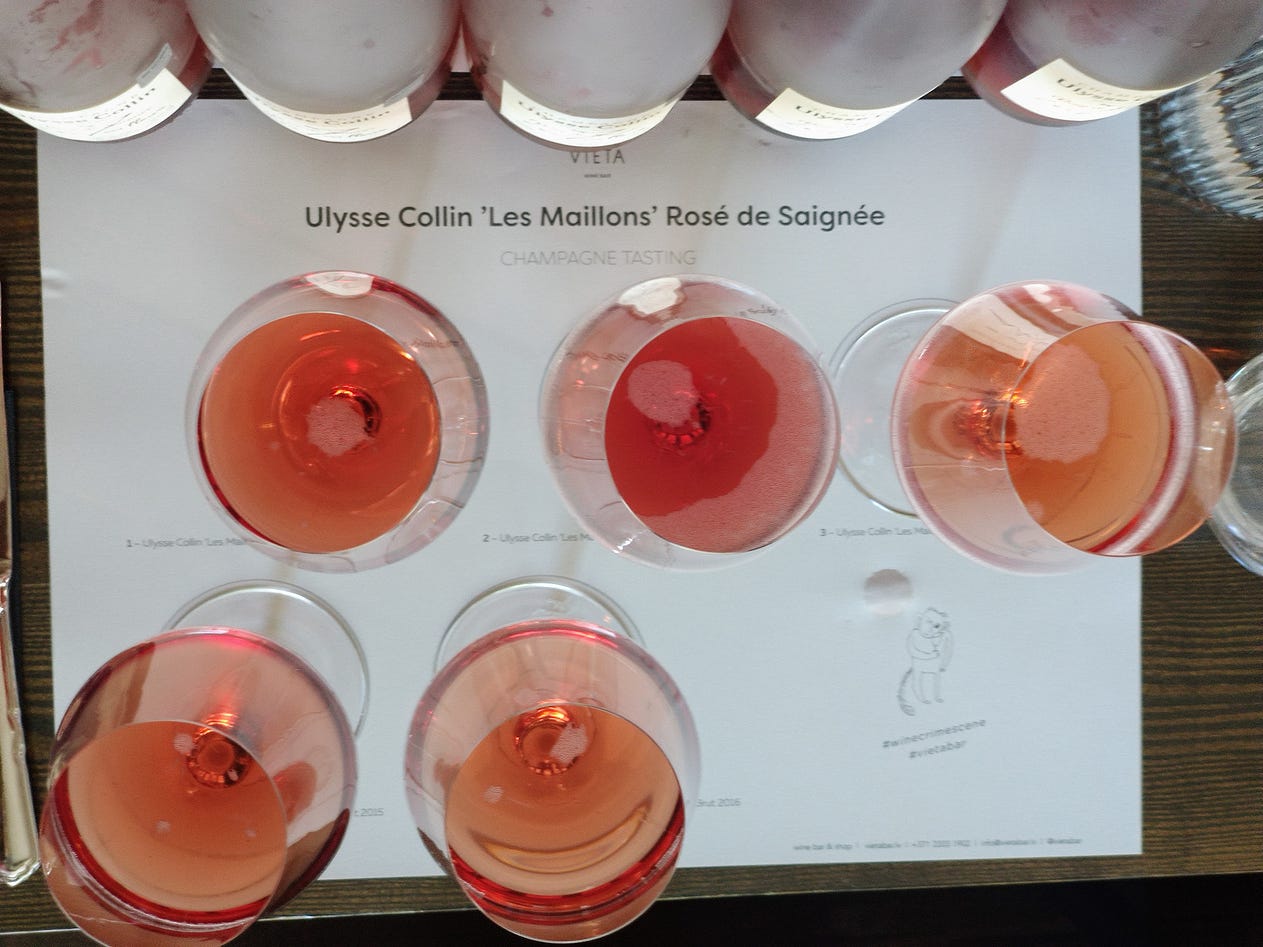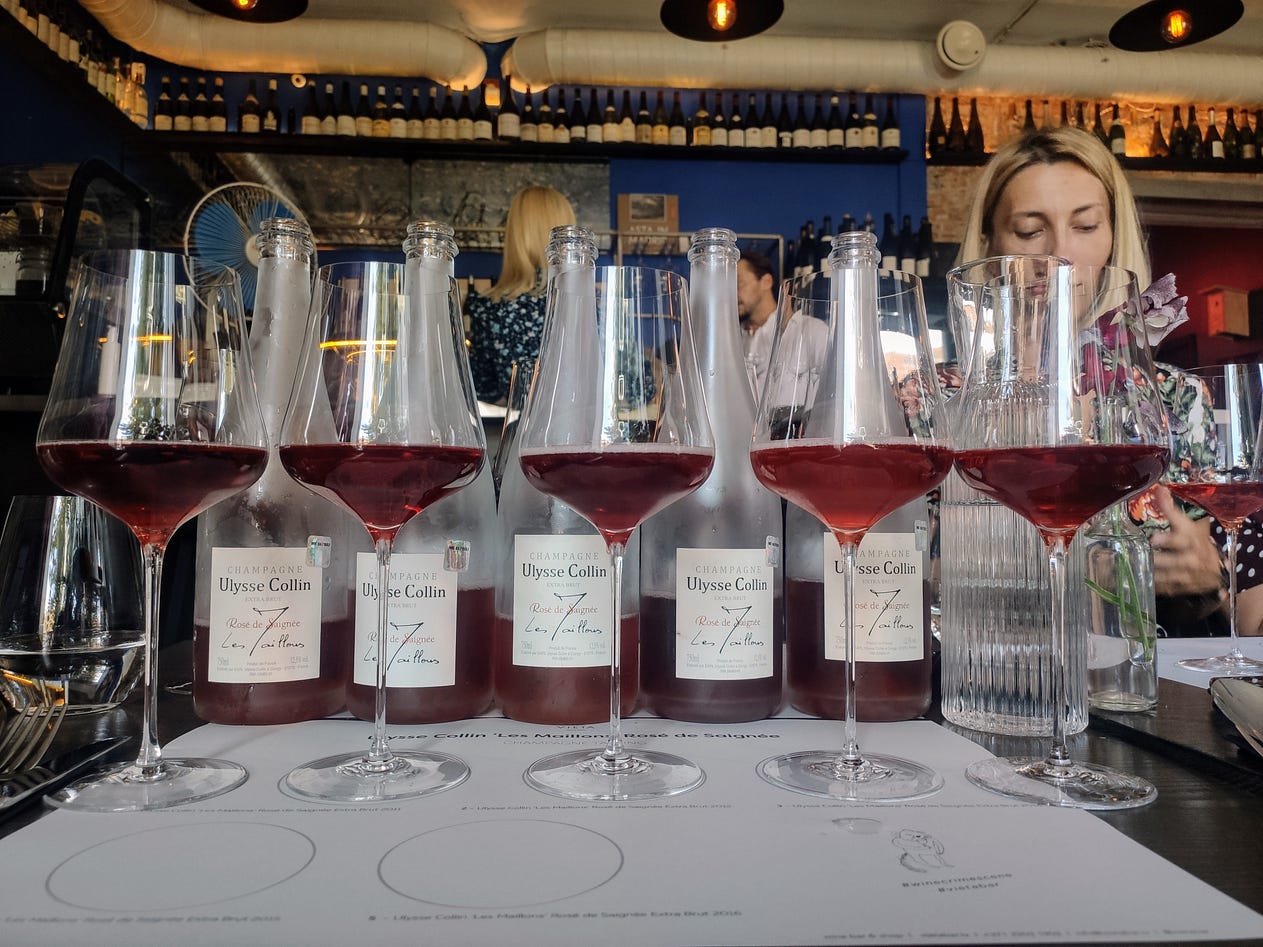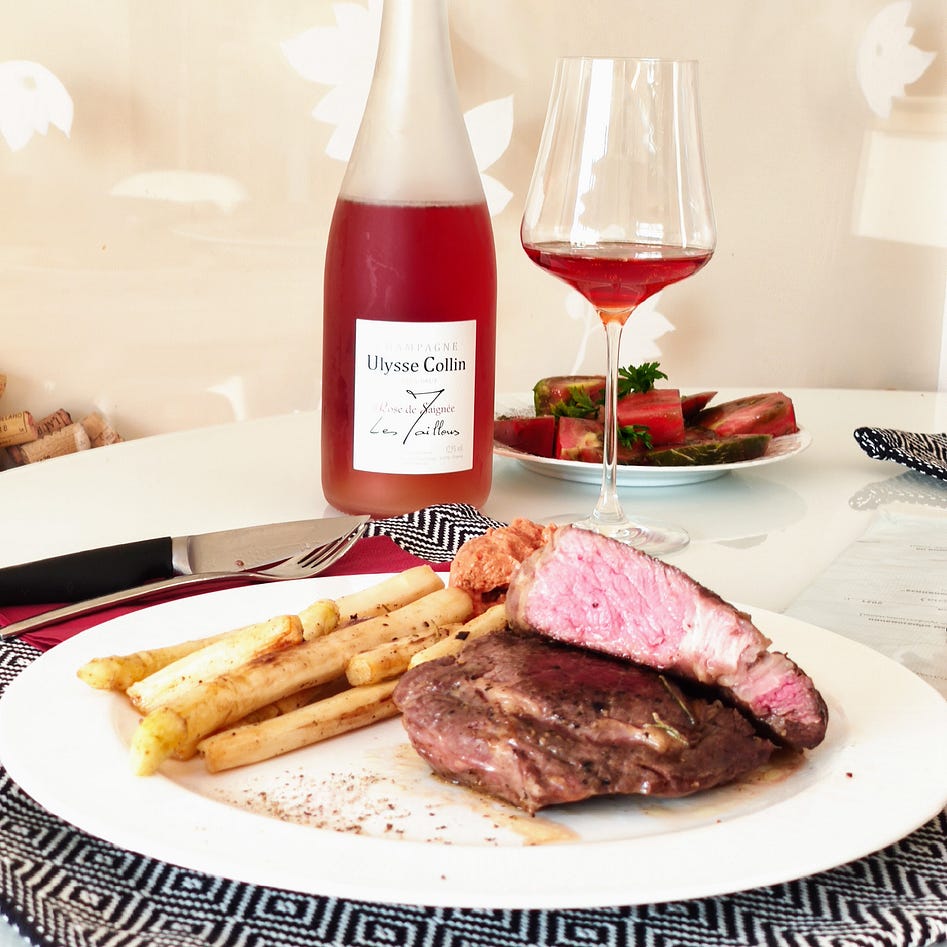It was December 1st, 2020, when I learned about an epic tasting that my good friends and champagne aficionados had been preparing. Vertical tasting of Champagne Ulysse Collin Rosé de Saignée Les Maillons in my home country of Latvia. All bottles coming directly from the winemaker’s cellar.
The initial plan was to have the tasting in mid-January, hoping the restrictions would be lifted by that time. Sadly, the virus had an alternative plan, pushing the tasting for a mere half a year ahead. It then took additional six months of my social media detox till I had finally put this text together.
Olivier Collin, the winemaker behind one of the most sought-after grower Champagnes, made his first wine in 2004. Technically, he started a year earlier, but because of a severe frost which hit his crop, he had to sell it off entirely. His winegrower DNA woke up in early 1990s, when Olivier became a true wine connoisseur and started dreaming of taking back his family vineyards around the village of Congy in the Coteaux du Morin. That is a truly inspiring story of Olivier becoming a lawyer to unlock a rolling lease agreement with Pommery and regain the control over 8.7 hectares of family holdings. He also studied viticulture and oenology in Bordeaux followed by a short apprentissage at Selosse.
Olivier defines his distinctive philosophy of making wines of Terroir. It all starts with working the soils and minimum interventions in the cellar to reveal the true personalities of each parcel by accompanying the forces of nature. All Ulysse Collin champagnes are single vineyards. Barrel fermentation with indigenous yeasts, no filtration and low dosage.
Today Ulysse Collin produces six cuvees totalling 50,000 bottles a year.
Three Blanc de Blancs coming from Chardonnay planted vineyards of Les Perrières, Les Enfers and Les Roises. Rosé de Saignée and Blanc de Noir come from 2.5 hectare vineyard Les Maillons exclusively planted with Pinot Noir.
The most recent addition to the portfolio is cuvee Le Jardin d’Ulysse which represents a field blend of Pinot Noir, Chardonnay and Meunier coming from a 1.55 hectare plot located inside the domain.
Olivier’s first wines were vintage wines only as he didn’t have any reserve wines. Over the years he managed to build a library of base wines which he keeps separately in oak foudres and 225-liter pièces. Now he enriches his champagnes by adding a portion of wines from previous vintages to better express their terroir.
Rosé de Saignée is the only exception that remains as a vintage cuvee.

I must confess that I am very picky when it comes to rosé champagnes made by the Saignée method. It is a real challenge to make a perfectly balanced one and requires the utmost mastery. Otherwise it might come over-extracted, heavy wine with excessive tannin, unpleasant bitterness and lower acidity which is a no-go to my palate.
Olivier takes his Rosé de Saignée to a hard-to-reach level of perfection. Its elegant and much beloved Burgundian style vinosity, along with gastronomic nature, place it at the very top of macerated rosé champagnes.
100% Pinot Noir of exceptional quality comes from Les Maillons vineyard with Eastern exposure. It is located in Barbonne-Fayel village of Coteaux du Sézannais, which is about 2 hour’s drive by Olivier’s tractor from his estate. The parcel was planted in the early 1970s and has low yields. Soils are rich in iron-clay over the underlying soft chalky bedrock with fossilized Coccoliths. Winemaking is the same as with other wines of the domaine. The only difference is the skin maceration, which might vary depending on the vintage conditions. Olivier also keeps about 20% of the stems.
After spending 36 months sur latte Rosé de Saignée gets its low dosage and is bottled in attractive frosted glass bottles showing off its appealing colour and providing good protection from light.

2012 (disg. 03/2019) came as a rare second release with extended lees aging (6 years). Vinous rosé in Burgundian style with vibrant acidity. Red forest berries, cherries and impressive long finish.

2014 (disg. 03/2018) stands out with bright berries driven fruitiness and perfect balance of all the elements.
2015 (disg. 03/2019) expressive yet elegant wine with generous red berries profile. Just perfect acidity with a rich mouthfeel. Fruit is exceptionally ripe, adding complexity. Feels deep and has a convincing potential. Only 2718 bottles were produced.
2016 (disg. 03/2020) another great example with signature cherry red berries. It shows more spices, slightly drier finish and younger tannins.
In conclusion, I can only share my admiration of the striking virtuosity of Rosé de Saignée Les Maillons. And I am excited with the evolution of Olivier’s mastery as he gains more experience with every vintage. Can’t wait to taste his new releases!

